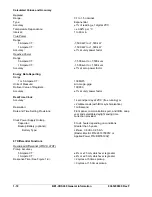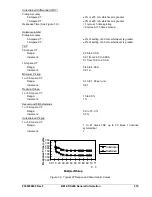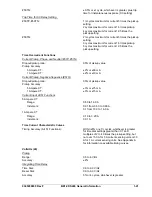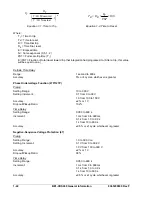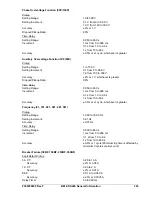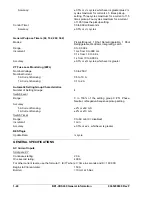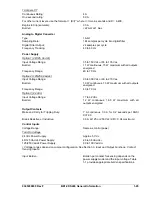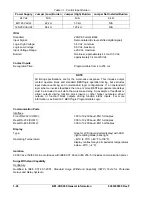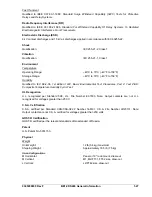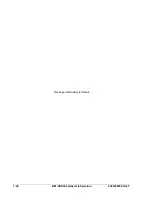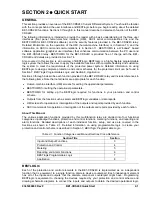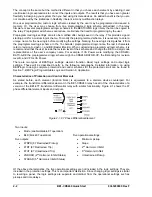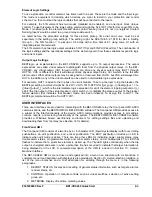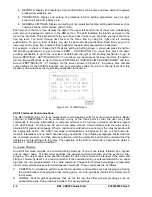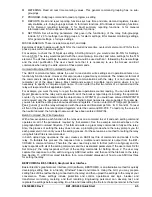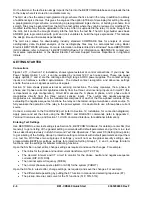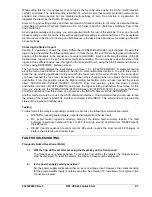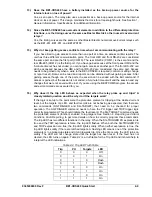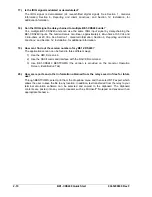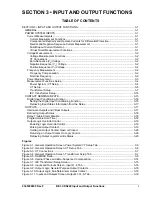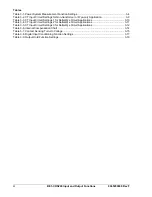
The concept is the same but the method is different in that you choose each element by enabling it and
use Boolean logic expressions to connect the inputs and outputs. The result is that you have even greater
flexibility in designing your system than you had using discrete devices. An added benefit is that you are
not constrained by the limitations in flexibility inherent in many multifunction relays.
One user programmable, custom logic scheme created by the user may be programmed and saved in
memory. Or, the user may choose from one preprogrammed logic scheme embedded in the relay
firmware or several preprogrammed logic schemes in the BESTCOMS logic library that can be copied to
the relay. Preprogrammed schemes can reduce or eliminate the need for programming by the user.
Preprogrammed logic settings can also be modified after being saved in the relay. This provides a good
starting point for a custom logic scheme. To modify the preprogrammed scheme, it is necessary to enter a
unique name for the new logic before modifying the settings. Naming the new logic distinguishes it from
the preprogrammed logic scheme. In the 16 character preprogrammed logic name, the last 4 characters
refer to revision A, dash (-), and BE (Basler Electric). When customizing a programmed logic scheme, it is
recommended that the user include the revision level of their scheme and change the BE to a 2-digit code
representative of the user's company name. For example, if VA Power were modifying the CDS240-
BATX-A-BE the preprogrammed logic scheme might be CDS240-BATX-B-VP, the B standing for revision
level B, and VP for VA Power.
There are two types of BESTlogic settings: element (function block) logic settings and output logic
settings. These will be described briefly in the following paragraphs. Detailed information on using
BESTlogic to design complete protection and control schemes for the protected circuit can be found in
Section 7,
BESTlogic Programmable Logic
and Section 8,
Application
.
Characteristics of Protection and Control Elements
As stated before, each element (function block) is equivalent to a discrete device counterpart. For
example, the transformer differential element in the BE1-CDS240 relay has all of the characteristics of a
version of the BE1-87T transformer differential relay with similar functionality. Figure 2-1 shows the 87
phase differential element inputs and outputs.
Figure 2-1. 87 Phase Differential Element
Two inputs:
Mode (enable/disable 87 operation)
BLK (block 87 operation)
Five outputs:
87RPU (87 Restrained Pickup)
87RT (87 Restrained Trip)
87UT (87 Unrestrained Trip)
2NDHAR
(2
nd
Harmonic Inhibit Status)
5THHAR
(5
th
Harmonic Inhibit Status)
Five operational settings:
Minimum pickup
Slope
2
nd
Harmonic Inhibit
5
th
Harmonic Inhibit
Unrestrained
Pickup
Of the above characteristics, the five operational settings are not included in the logic settings. They are
included in the protection settings. This is an important distinction. Since changing logic settings is similar
to rewiring a panel, the logic settings are separate and distinct from the operational settings such as
pickups and time delays.
2-2
BE1-CDS240 Quick Start
9365200990 Rev F
Summary of Contents for BE1-CDS240
Page 2: ......
Page 8: ...vi BE1 CDS240 Introduction 9365200990 Rev F This page intentionally left blank ...
Page 38: ...1 28 BE1 CDS240 General Information 9365200990 Rev F This page intentionally left blank ...
Page 40: ...ii BE1 CDS240 Quick Start 9365200990 Rev F This page intentionally left blank ...
Page 152: ...ii BE1 CDS240 Metering 9365200990 Rev F This page intentionally left blank ...
Page 226: ...iv BE1 CDS240 Application 9365200990 Rev F This page intentionally left blank ...
Page 286: ...ii BE1 CDS240 Security 9365200990 Rev F This page intentionally left blank ...
Page 290: ...9 4 BE1 CDS240 Security 9365200990 Rev F This page intentionally left blank ...
Page 292: ...ii BE1 CDS240 Human Machine Interface 9365200990 Rev F This page intentionally left blank ...
Page 306: ...10 14 BE1 CDS240 Human Machine Interface 9365200990 Rev F This page intentionally left blank ...
Page 308: ...ii BE1 CDS240 ASCII Command Interface 9365200990 Rev F This page intentionally left blank ...
Page 342: ...11 34 BE1 CDS240 ASCII Command Interface 9365200990 Rev F This page intentionally left blank ...
Page 349: ...Figure 12 5 Horizontal Rack Mount Front View 9365200990 Rev F BE1 CDS240 Installation 12 5 ...
Page 361: ...Figure 12 17 Typical DC Connection Diagrams 9365200990 Rev F BE1 CDS240 Installation 12 17 ...
Page 372: ...12 28 BE1 CDS240 Installation 9365200990 Rev F This page intentionally left blank ...
Page 468: ...13 92 BE1 CDS240 Testing and Maintenance 9365200990 Rev F This page intentionally left blank ...
Page 512: ...14 42 BE1 CDS240 BESTCOMS Software 9365200990 Rev F This page intentionally left blank ...
Page 544: ...ii BE1 CDS240 Terminal Communication 9365200990 Rev F This page intentionally left blank ...
Page 550: ...ii BE1 CDS240 Settings Calculations 9365200990 Rev F This page intentionally left blank ...
Page 578: ...D 28 BE1 CDS240 Settings Calculations 9365200990 Rev F This page intentionally left blank ...
Page 579: ......

